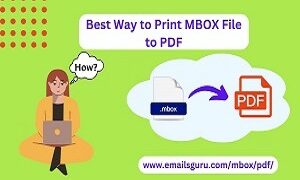Introduction
In today’s digital era, traditional paper business cards are gradually being replaced by digital alternatives. As networking and professional connections evolve, digital business cards offer an innovative and efficient way to share contact information. This article explores the main advantages of digital business cards and why they are becoming the preferred choice for professionals worldwide.
What Is a Digital Business Card?
A digital business card is an electronic version of a traditional business card that allows professionals to share their contact details digitally. These cards can be created using various platforms and apps and shared through QR codes, email, social media, or NFC technology. Unlike paper business cards, digital business cards offer a dynamic and interactive way to present professional information.
The Main Advantages of a Digital Business Card
3.1. Cost-Effective Solution
Printing traditional business cards can be expensive, especially when ordering in bulk. Digital business cards eliminate printing costs, making them a more affordable option for professionals and businesses. Additionally, there is no need for reprinting when information changes, further reducing expenses.
3.2. Environmentally Friendly
Traditional business cards contribute to paper waste and deforestation. Digital business cards help reduce environmental impact by eliminating the need for paper production and printing, making them a sustainable alternative.
3.3. Easy to Share and Access
Digital business cards can be shared instantly via email, QR codes, social media, or text messages. This ease of sharing ensures that contacts receive the information without the risk of losing a physical card.
3.4. Customization and Versatility
Unlike paper business cards, digital business cards can be easily customized with different designs, colors, and multimedia elements such as videos, links, and social media profiles. This level of personalization helps individuals and businesses create a unique and engaging representation of their brand.
3.5. Enhanced Networking Opportunities
With digital business cards, professionals can easily exchange information during virtual meetings, webinars, or in-person events. The ability to store and manage contacts digitally enhances networking efficiency and ensures that connections are never lost.
3.6. Real-Time Updates
One major drawback of paper business cards is that they become outdated when contact details change. Digital business cards allow users to update their information in real-time, ensuring that recipients always have the latest details.
3.7. Increased Storage and Data Security
Paper business cards can be misplaced or damaged. Digital business cards are stored securely in cloud-based systems, ensuring that contact details are never lost. Additionally, users can back up their information and retrieve it whenever needed.
3.8. Integration with Digital Platforms
Digital business cards can be integrated with CRM software, LinkedIn, and other professional platforms, making it easier to manage and organize contacts. This integration streamlines follow-ups and enhances business relationships.
3.9. Analytics and Tracking Features
Many digital business card platforms provide analytics to track engagement and interactions. Users can see who viewed their card, how often it was accessed, and which details were clicked. These insights help professionals measure their networking effectiveness.
3.10. Contactless and COVID-Safe
In a world where hygiene and safety are a priority, digital business cards offer a contactless way to exchange information. This feature is particularly beneficial in reducing physical contact at events and meetings.
How to Create a Digital Business Card
Creating a digital business card is simple and can be done using various apps and platforms. Here’s a step-by-step guide:
- Choose a Digital Business Card Platform – Some popular platforms include HiHello, Mobilo, and Haystack.
- Enter Your Details – Add your name, job title, company, phone number, email, website, and social media links.
- Customize the Design – Choose colors, fonts, and images that represent your brand.
- Add Interactive Elements – Incorporate QR codes, videos, and clickable links.
- Save and Share – Generate a QR code or a shareable link and distribute it through email, social media, or messaging apps.
The Future of Digital Business Cards
As technology continues to advance, digital business cards are expected to become more sophisticated. Features such as artificial intelligence, blockchain for data security, and enhanced integration with smart devices will further enhance their functionality. Businesses and professionals should embrace this shift to stay ahead in a digital-first world.
Conclusion
Digital business cards offer numerous advantages over traditional paper cards, including cost-effectiveness, environmental benefits, ease of sharing, and real-time updates. They provide a modern and innovative way to network, ensuring that professionals can seamlessly connect and manage their contacts. As the world moves towards digital transformation, adopting digital business cards is a smart and forward-thinking choice for any professional or business.




























